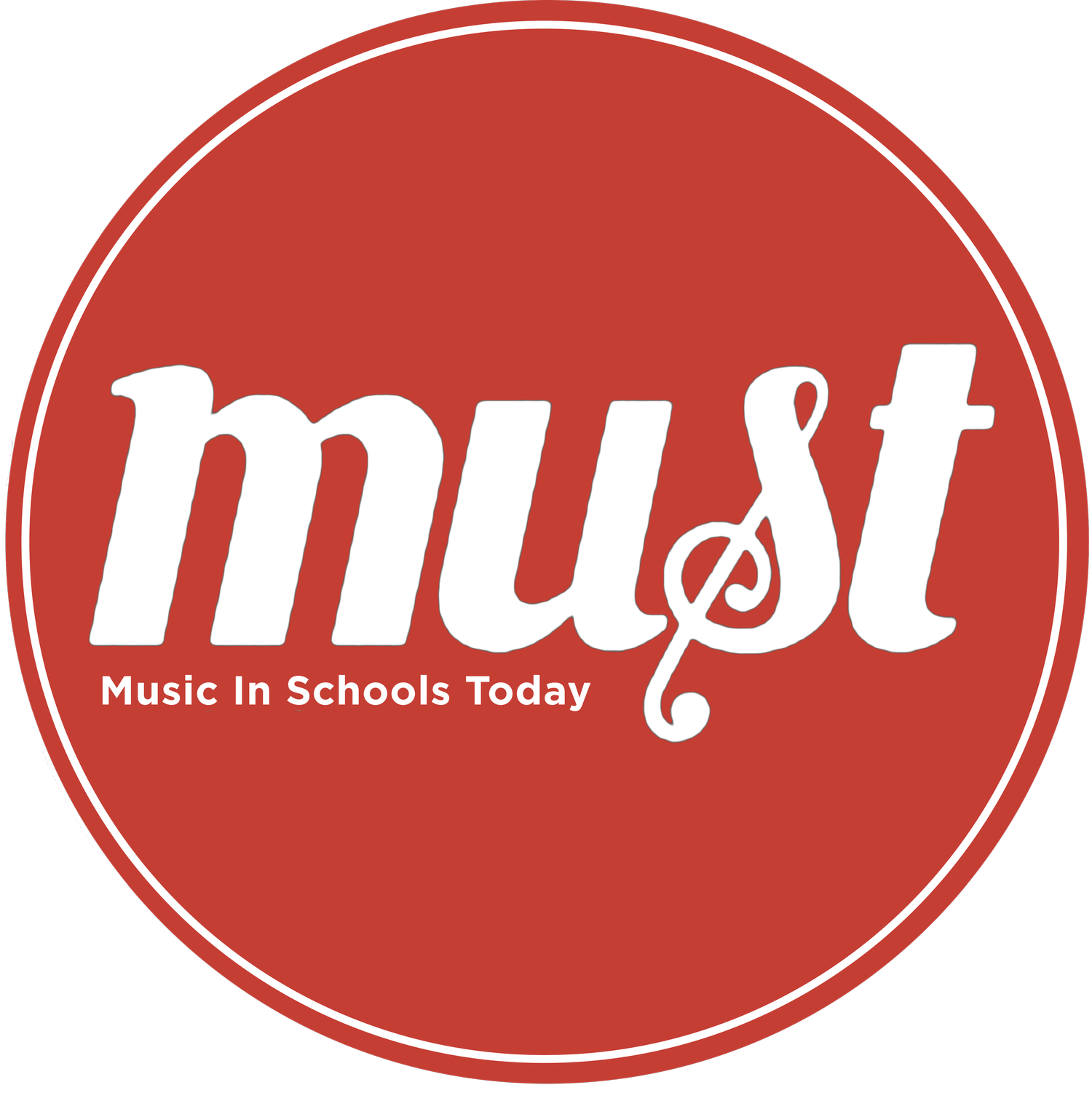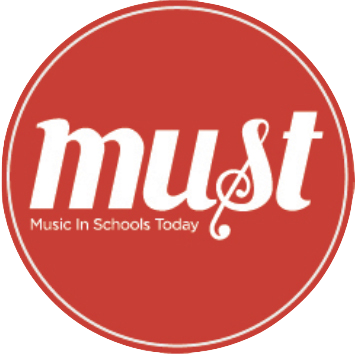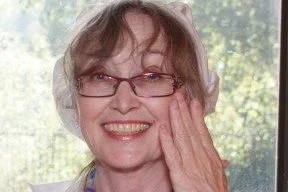Meet the Staff: Meg Madden
Let’s bring music back to the classrooms!
From the staff of MUST: The pandemic threw us all for a loop but now, with children starting to return to classrooms, it’s time to ramp up our efforts to reach as many schools as possible. Children need music in their lives, especially after the isolation of the last couple of years. So let’s give it to them!
In order to get back into the swing of things, we’re starting off with a Meet the Staff series of interviews presented in a blog format so that you can ask additional questions of the folks keeping MUST afloat. Acceptable questions are: what can I do to help? Unacceptable questions are: You look cute. Can I get a date?
We begin with MUST’s Executive Director Meg Madden.
Speaking with Meg for the first time, you get the feeling she’s a woman with many layers, but beneath them all is a visionary. When she tells you she wants to increase enrollment in their music programs from 2,000 to 5,000 students in a year, you really believe she can do it. Not only do you believe her, but you also want to help her.
And so, who is she besides someone who believes passionately that all children must be exposed to music at a young age? Let’s find out.
Meg and CA Representative Nancy Pelosi on New Year’s Eve 2022
Tell us about your childhood and how it shaped your vision for MUST.
My parents were both visual artists who met at the Art Institute of Chicago. It's possible that I became a manager/mediator because of early struggles to bring order to the artistic chaos that was my family. My resulting work vision has been to help each of us to reach our creative potential.
What sort of music did your parents listen to?
My mother played records for us when we were little. She often told me how I crowed "Chowski" in the crib because I loved the Nutcracker so much! Meanwhile Father gleefully blasted The 1812 Overture from his FM radio. At night we listened to The Midnight Special on WFMT and I memorized the lyrics to the folk music.
Sugar Plum Fairies and cannons! Oh my! Two of Tchaikovsky’s most dramatic works. What else helped you to survive childhood?
I loved to draw and write and began organizing very early – starting with inventing games with the neighborhood boys. I produced school dance themes, handling publicity and decorations, and I also wrote and edited throughout my school years.
In high school, I began spending summers working in Yellowstone and got to know wild animals and nature up close. I even got chased by a grizzly! I especially loved riding the half-wild horses.
Wow! I can barely handle a ride on a carousel horse! How did your experiences in Yellowstone affect your later life?
Besides a lifelong love of horseback riding, interacting with nature has been a lifesaver for me, especially during Covid. Animals have an amazing amount to teach us. For example, I’m currently writing about ten years of intuitive conversations I shared with a very spirited Arabian named Concho. And I continue to learn more about the land at the ranch in San Mateo where I keep Indi, a Morgan mare.
My cat’s like a shrink; he’d charge by the minute (in treats) for any insights he’d be willing to share.
I’ve always had cats. My current companion is Khalisee, a supremely confident Abyssian who would enjoy a playmate. Hopefully she’ll get one in either May or June!
Is it true that you once played ukulele in a girl’s band?
When the folkie scene suddenly hit in my junior year at Grinnell College, I identified with it and the resulting cultural shift. Some of my girlfriends and I formed a dorm band. I suspected they only let me play the ukulele with them because I organized our jams, but one of them recently told me I had a really good Country Western voice, which pleased me greatly to hear this late in life!
A really good Country Western voice is something to be proud of! Too bad she didn’t tell you earlier. After college, you could have shuffled off to Nashville to play the Grand Ole Opry. Or perhaps you did?
No, I spent a year in Boston chasing the folk music dream and managing the Unicorn Coffee House where I met many luminaries of that movement. After a year, I decided to pursue a career in writing and moved to New York where I met and mingled with many artists and influencers of the social scene of the 60s and 70s. It was an amazing time to be alive!
I ended up taking a lot of jobs, most notably as a social worker. A couple of years in that field convinced me it was more productive to start with young children. I founded a couple of nursery schools and audited at Bank Street College of Education. They focused on free play and teaching to each individual child. Their philosophy still informs my work today.
One of my favorite memories is playing guitar to help an autistic boy learn to speak. We taught another boy not to bite with help from a rabbit and crayons. Robbie’s picture still hangs on my wall. The caption reads “This is a giraffe. He bites!”
Having worked with foster children, I completely agree. The younger you can reach a child, the better. I would love to see that giraffe picture! Please share!
Robbie’s giraffe
So how did you wind up in the SF Bay Area?
I met my partner Rick on a vacation to the Bay Area and the rest, as they say, was history. My first educational job was at the Berkeley Research Group. This led to an opportunity that still informs my work: The chance to work with Dr. Frank Oppenheimer, the founder and Director of the Exploratorium. I worked as his assistant and designed and taught the Science for Little Kids program. I also coordinated Oppenheimer and David Rockefeller’s national curriculum: “Coming to our Senses.”
Frank’s vision was that one can find everything they need to understand science in a garbage dump. It’s deceptively simple and profound to realize that we experience and understand the world through our senses. It’s an investigation through creative play. The conservatives of the day essentially put it out of business because it was too "touchy-feely”.
Did you ever get back to your first love — “Chowski”?
As a child, I loved to copy my mother’s drawings of ballerinas — especially the toe shoes. My life came full circle when in the 1980s I would get the chance to work with Dr. Richard LeBlond, President of the SF Ballet. I hosted the President’s private box two to four times a week for the eight weeks of Nutcracker season! Chowski heaven but after hundreds of performances, that’s a LOT of Nutcrackers!
Tell us more about your work at the Ballet?
I interned with Richard – we were in crowded quarters, so I sat in his office – the fly on the wall - and learned a great deal from him about leadership, programming, fundraising and Board building. He then founded a Community Relations Department for me to run. Although I had zero clout inside the Ballet, I enjoyed great reach in the Bay Area cultural community which, in turn, allowed me to do a lot of community building. I developed a Dance in Schools Program which is still active today and which has served as the model for many other music integration programs.
Finally, at Co-Artistic Director Michael Smuin's request, I founded and managed the Ballet Breakers - which had 82 kids enrolled at its height - coaching them through performances on stages and parking lots throughout the Bay Area, and often the Opera House Stage. I'm still in touch with some of them.
What keeps you motivated despite, as you’ve put it “the punishing cut-backs and marginalization of music and the arts in American schools”
We are teaching more effectively than ever before, largely due to advances in the field. I am proud that MUST has been a part of them.
I believe deeply in the healing power of music and the arts. Teaching our children compassion and critical thinking can help us do better as a species. My greatest pleasure working at MUST has been visiting the classroom and interacting with the children themselves. I treasure the deeply positive relationships I've developed over the years with our Board, staff, and colleagues in the community.
Integrating various pathways is an ongoing adventure. I'm quite sure that everything is alive, and that we as a species need to understand our correct place in the natural order if we want to survive.
This is a wonderful time to be alive, because some of the most pivotal choices we need to make are now conscious: climate catastrophe vs. becoming gardeners of what could be Eden, ignorance vs. the amazing leaps we are making in understanding, post-colonial domination vs. collaboration, isolation vs. participating in the web of life.
So many people want the best for our children. Thinking of them helps us to see a little further down the road. And hopefully, we are giving them powerful tools to deal with a future we can't truly imagine.
Click to learn more about our amazing staff and teaching artists!
To stay up to date with MUST, subscribe to the newsletter below.
Q+A by Jan Twissel
Jan is a writer and blogger who’s lived in the Bay Area for most of her life. She grew up memorizing the lyrics to Broadway Musicals and, like Meg, her father loved playing the 1812 Overture!





